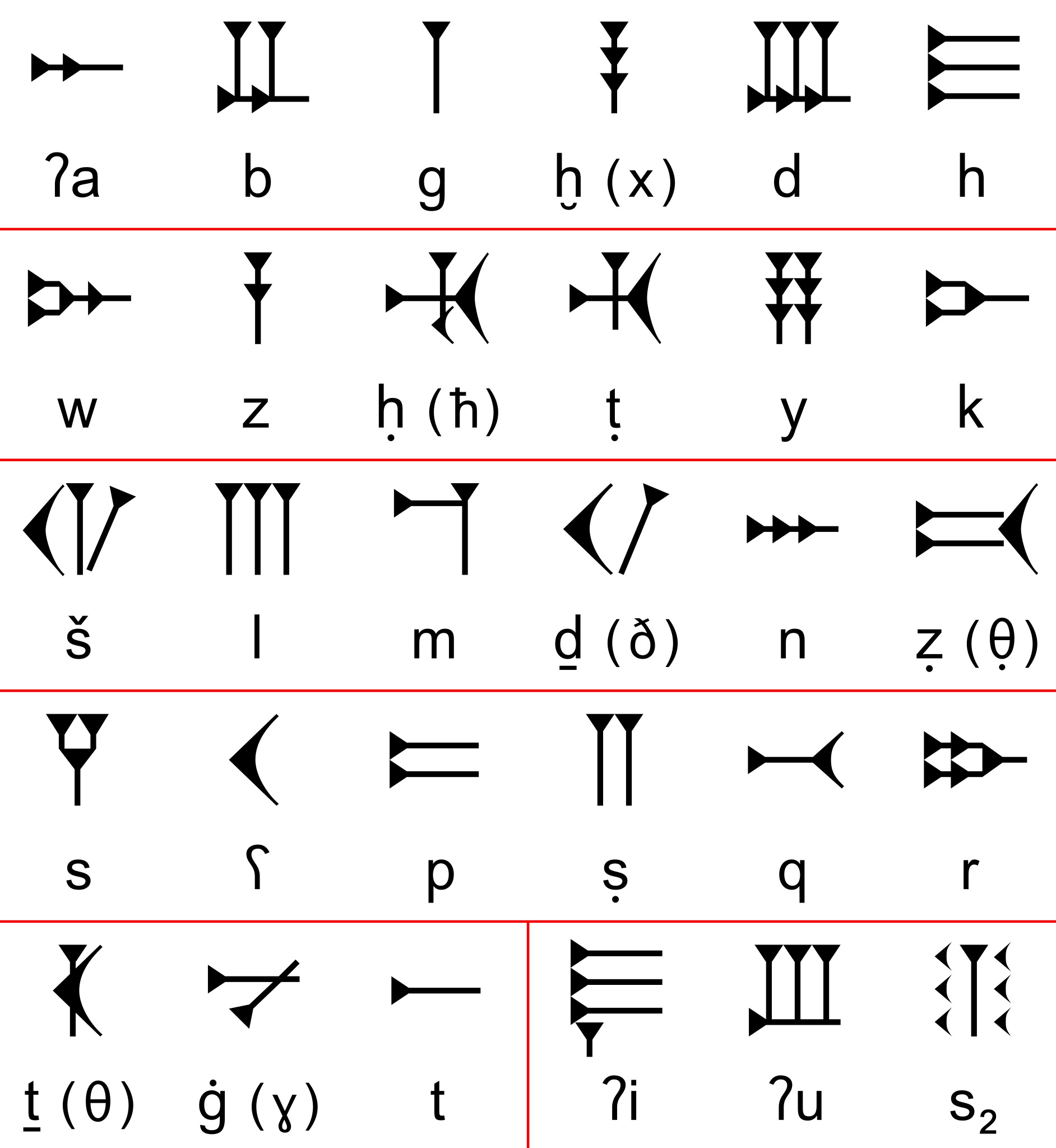
The Social Context of Writing in Ancient Ugarit
April 2022 | Vol. 10.4
By Philip Boyes
We often ask, what is writing? A better question is, who is writing? It is very easy to approach ancient writing as something rather abstracted. The collections of documents which have such a central place in our study of the ancient Near East tell us enormous amounts about life, culture and belief in the region. But often we tend to focus primarily on their textual content rather than their status as physical objects – inscribed clay tablets, wax-covered writing-boards, or other kinds of artefacts.
Likewise, if we look at the act of writing rather than its end product, it’s common for scholars to think in terms of ‘writing systems’, where scripts such as cuneiform or early forms of the alphabet are seen almost as self-contained puzzles to be unraveled. The changes within them are charted and explained over time through reference to things like efficiency at accurately communicating information. People don’t seem to enter the equation.
This isn’t to say that nobody thinks about the material aspects of writing practices. On the contrary, studies into aspects like clay composition or the forms of writing implements are booming research areas. Still, materiality research often concentrates on the immediate act of producing writing surfaces and making marks upon them, rather than connections with other kinds of objects or the physical contexts in which writing was found or used.

Uagrit today. Photo by Feldstein via Wikimedia Commons. CC BY-SA 4.0
There’s a wider cultural and material context that mustn’t be overlooked. Writing is a social action that living humans engage in, like chatting, religion, dancing, building, and so on. Rarely can any action take be fully understood just through the mechanics of how we perform it or by analysing the end result. Practices are freighted with meaning for the people doing them and for those around them. These meanings aren’t fixed, but vary hugely depending on the people involved and the different contexts in which the actions themselves and any objects produced are interpreted. The significance of material culture doesn’t just lie in the tools or equipment directly used, but in how the physical settings or the other objects present help shape meaning for the people involved, and in the interactions between the items produced and other objects throughout their lifespans.
Of course, this isn’t a one-way process. Practices like writing are shaped by the cultures and societies in which people do them and engage with their products; but these practices and products in turn influence people’s ideas, behaviours and choices, and thus contribute to reshaping society and culture themselves. So to really get at the socio-cultural significance of any practice – including writing – we need to make it the centre of a much wider study, one that takes into account how that practice relates to everything else around it, and especially the role of people and their sometimes eccentric or irrational paths through life.
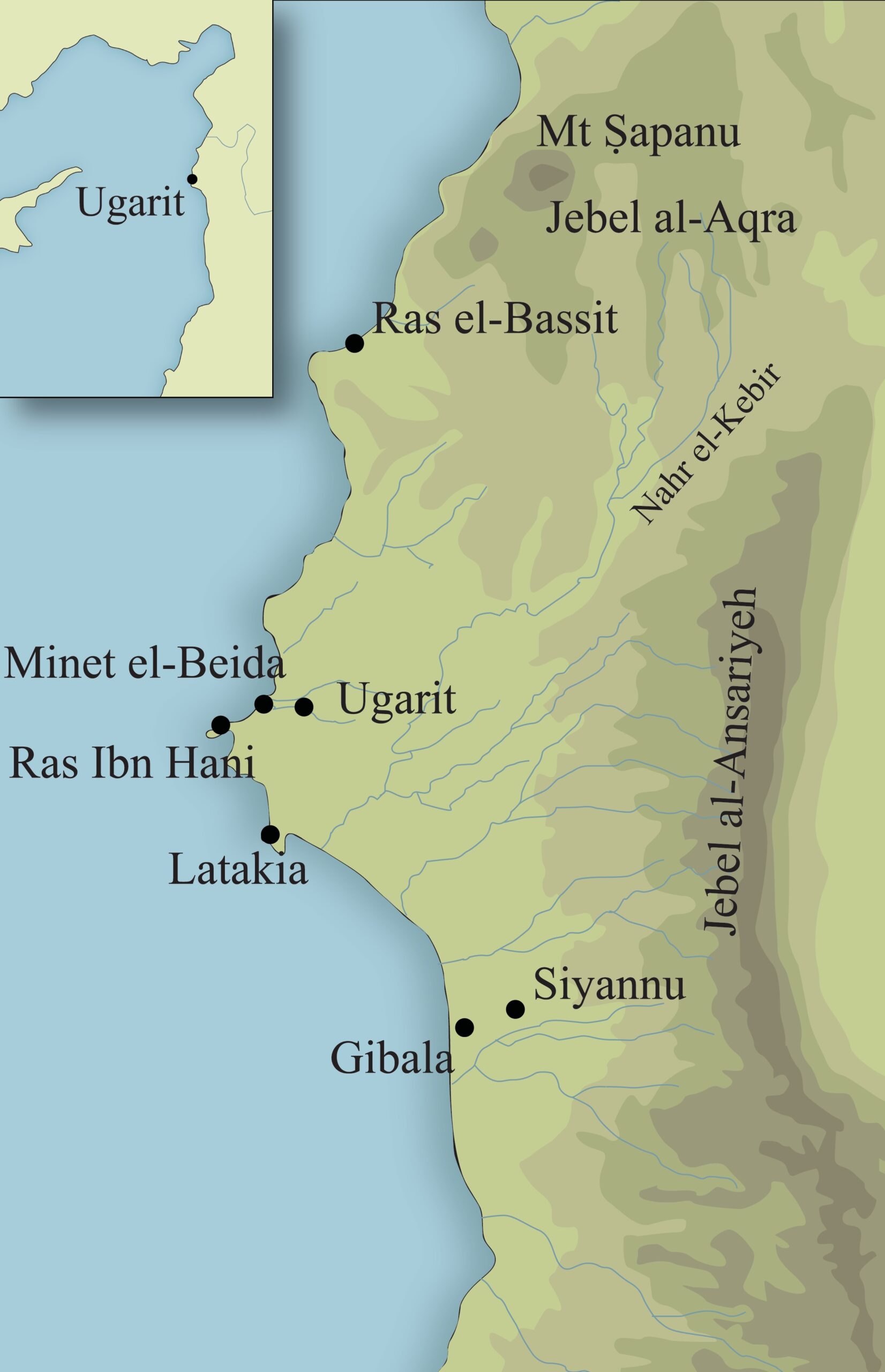
The Kingdom of Ugarit in the Late Bronze Age. Image courtesy of the author.
This contextual approach to writing is at the heart of the CREWS Project (Contexts of and Relations between Early Writing Systems), led by Dr Philippa Steele and based in the Faculty of Classics at the University of Cambridge. Our research interests cover much of the East Mediterranean and Levant during the second and first millennia BCE. My own research as a member of CREWS has focused on one of the most fascinating and important sites in the region for the history of writing, the Syrian coastal city of Ugarit (modern Ras Shamra), about 10km from modern Latakia.
Ugarit had a long history, much of which we only hazily understand. The last few centuries of its existence, however, have provided a treasure-trove of information, thanks to over 90 years of excavation and study and a large corpus of surviving documents. These cover roughly the period from Ugarit’s incorporation into the Hittite Empire, c.1350 BCE, to the city’s destruction and abandonment c.1185 BCE in the upheavals that ended the East Mediterranean Bronze Age.
The last 75 to 100 years of the city’s existence was a time of particular diversity in language and writing. Written material in at least eight languages has been recovered from the site: Akkadian, Ugaritic, Hittite, Luwian, Sumerian, Hurrian, Egyptian and the unknown language(s?) written in Cypro-Minoan. Apart from Hittite and Luwian, most of these seem to have been written at Ugarit itself. The selection of scripts is almost as broad: Mesopotamian cuneiform, alphabetic cuneiform, Luwian hieroglyphs, Egyptian hieroglyphs and Cypro-Minoan. Of these, the first two account for the vast majority of Ugarit’s documents, and it is for alphabetic cuneiform that the site is most famous.
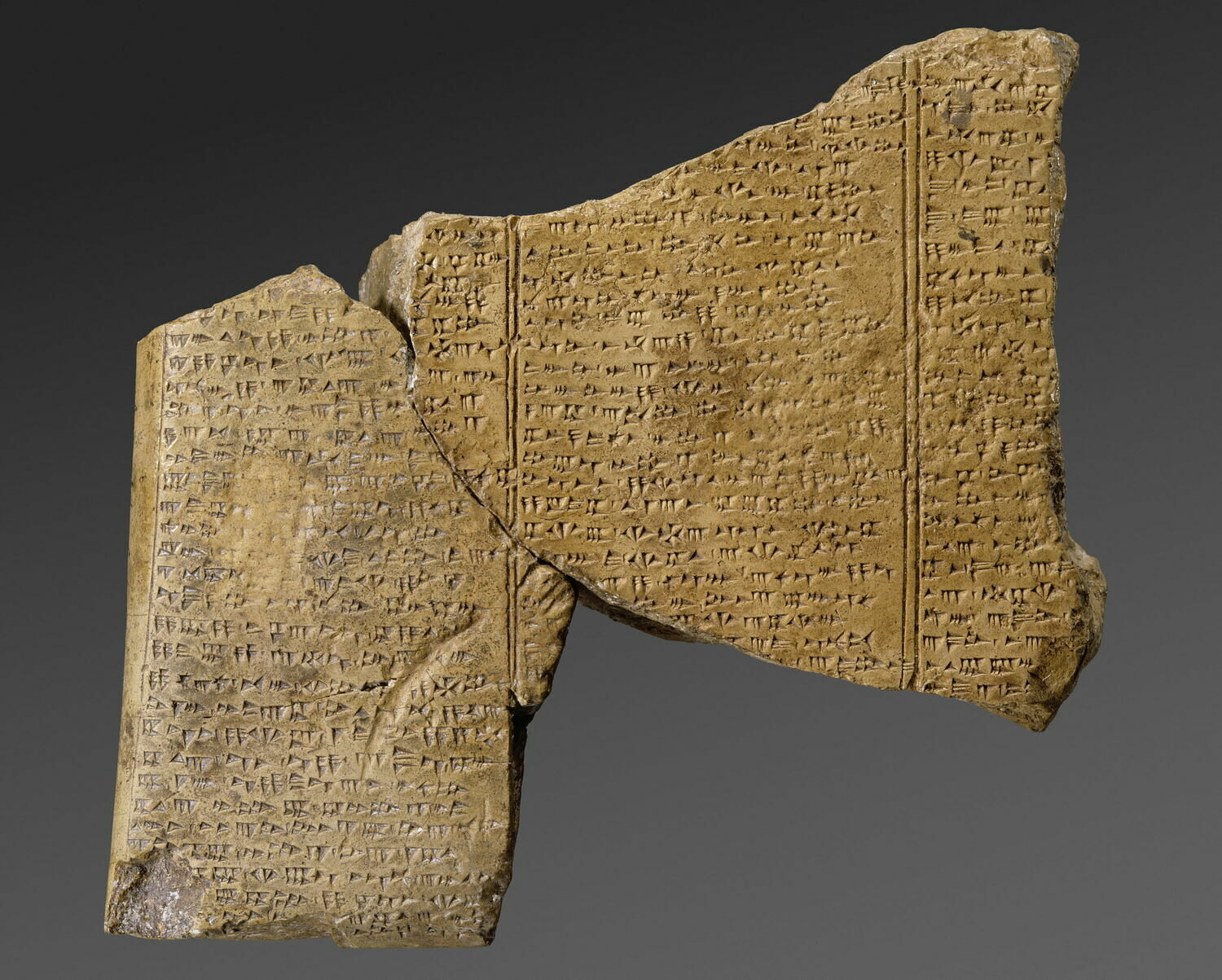
One of the tablets of the Ugaritic Epic of Baal, in alphabetic cuneiform. Louvre AO 16641. © 1987 GrandPalaisRmn (musée du Louvre) / Maurice et Pierre Chuzeville
Mesopotamian cuneiform is of course familiar to most people with an interest in the ancient Near East. In this period it was widely used even outside Mesopotamia for international communication, using the Akkadian language. Ugarit has produced thousands of clay tablets of this kind. What’s unique, however, is that an even greater number of tablets have been uncovered which use an entirely different kind of cuneiform with a repertoire of only 30 signs. Rather than encoding syllables or standing for a whole word, these cuneiform signs each represent a single consonant.
In other words, this was a consonantal alphabet, structurally almost identical to the linear alphabets that were becoming established elsewhere in the Levant around the end of the Bronze Age, which would develop into the Phoenician, Hebrew and Arabic alphabets, and ultimately every alphabetic system currently in use around the world. Like these other alphabets, Ugarit’s alphabetic cuneiform was used mainly for the local vernacular language rather than Akkadian. What seems to have been unique to Ugarit, however, is attempting to cross-pollinate this new alphabetic approach to writing with the established Mesopotamian one.
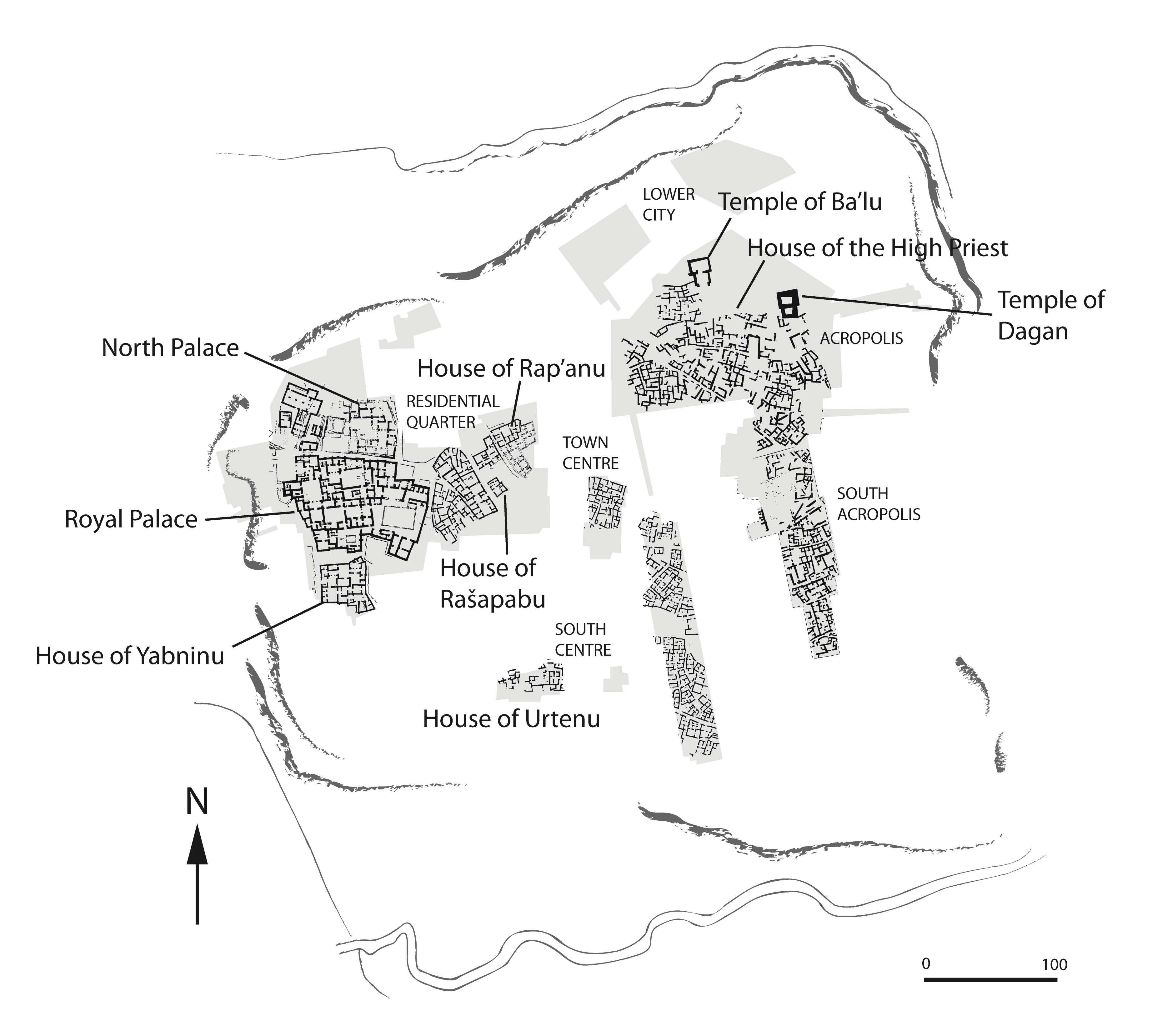
Plan of Ugarit, Late Bronze Age. Image courtesy of the author.
My research explores the cultural role of writing at Ugarit during this time of great change and turmoil, including the relationship between writing, demographics and identity; the role of writing in constructing and defining the landscape of Ugarit both in the capital and across the kingdom; and how changes in writing practices related to wider social changes in the kingdom and the region. Despite the extensive and generally high-quality archaeological investigation of Ugarit, putting this approach into practice was extremely challenging. Publication of material culture has lagged decades behind that of texts, making it very difficult to discuss inscribed objects as part of whole archaeological assemblages. Matters are even worse in the hinterland, where there has been very little archaeological investigation at all.
Despite these challenges, some themes emerged clearly. One is the physical and social restrictedness of access to writing. Ugarit seems to have almost totally lacked what we might think of as ‘public’ writing. The closest it comes is the display of inscribed objects in temples, places probably highly circumscribed in terms of who could access them and how they could move around. Private documents were widely distributed across the city, often in tablet stores belonging to well-to-do men involved in business and administration. But these stores were generally located in the more private upper storeys of houses. The wider population might have glimpsed people taking advantage of the light by doing their writing on rooftop terraces, but it seems unlikely most people outside the elite had much experience of what writing looked like close-up.
Similarly, despite Ugarit’s social diversity, it is difficult to find any evidence that ‘minority’ scripts like Cypro-Minoan or writing in languages like Hurrian, were used by groups to articulate their own identities. Elite women such as queens made use of writing, but there is no firm evidence that they did the actual writing themselves. Routes of social mobility – such as what led ʾIlimilku from the small village of Šubbanu to being the high-status writer of most of Ugarit’s literary tablets – are tantalisingly out of reach. Writing at Ugarit seems to be overwhelmingly a tool of the elite.

Alphabetic Cuneiform. Public Domain via Wikimedia Commons.
This has implications for how we interpret the rise of alphabetic cuneiform and its association with the vernacular Ugaritic language. We can see this as a process of vernacularisation and draw parallels with similar trends elsewhere in the Near East and East Mediterranean at the time – the rise of Phoenician further south, or the expansion of elite use of Luwian hieroglyphs in Anatolia. We can also link these phenomena to a wider reaction against the faltering Late Bronze Age globalism that prompted new kinds of localism around the East Mediterranean.
But Ugarit’s vernacularisation in writing practices was not about projecting a populist view of its elite to the general population. Most people never saw writing close-up, and even if they did, one kind of cuneiform likely looked much like another. Instead, Ugarit’s elite was talking to itself: its members used new forms of writing as part of an internally-focused act of self-representation, one carefully hedged with a pragmatic recognition that they needed to continue to participate in the globalism represented by Mesopotamian cuneiform and the Akkadian language. The unique writing practices we find at Ugarit, then, can be seen as evidence of complex elite strategies for defining themselves in a period of great social and political upheaval, one which would, ultimately, see the destruction of them and their city.
Philip Boyes is Research Associate on the ERC ‘Contexts of and Relations between Early Writing Systems’ Project. He is also the author of Script and Society: The Social Context of Writing Practices in Late Bronze Age Ugarit, available from Oxbow, or as a free open access PDF.
How to cite this article
Boyes, P. 2022. “The Social Context of Writing in Ancient Ugarit.” The Ancient Near East Today 10.4. Accessed at: https://anetoday.org/boyes-writing-ugarit/.
Want to learn more?
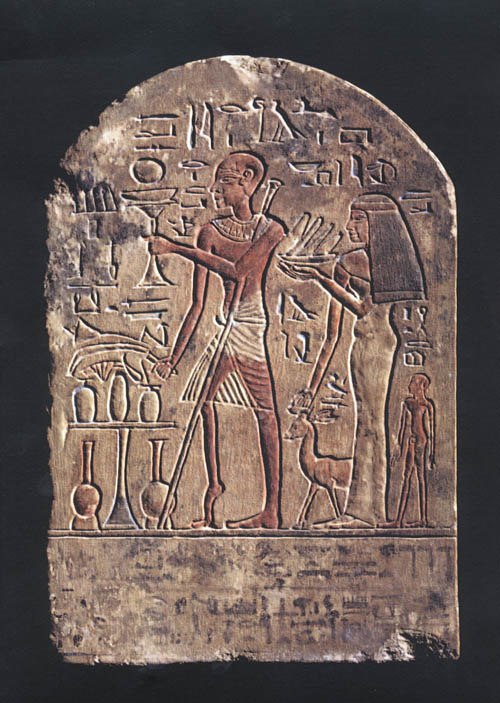
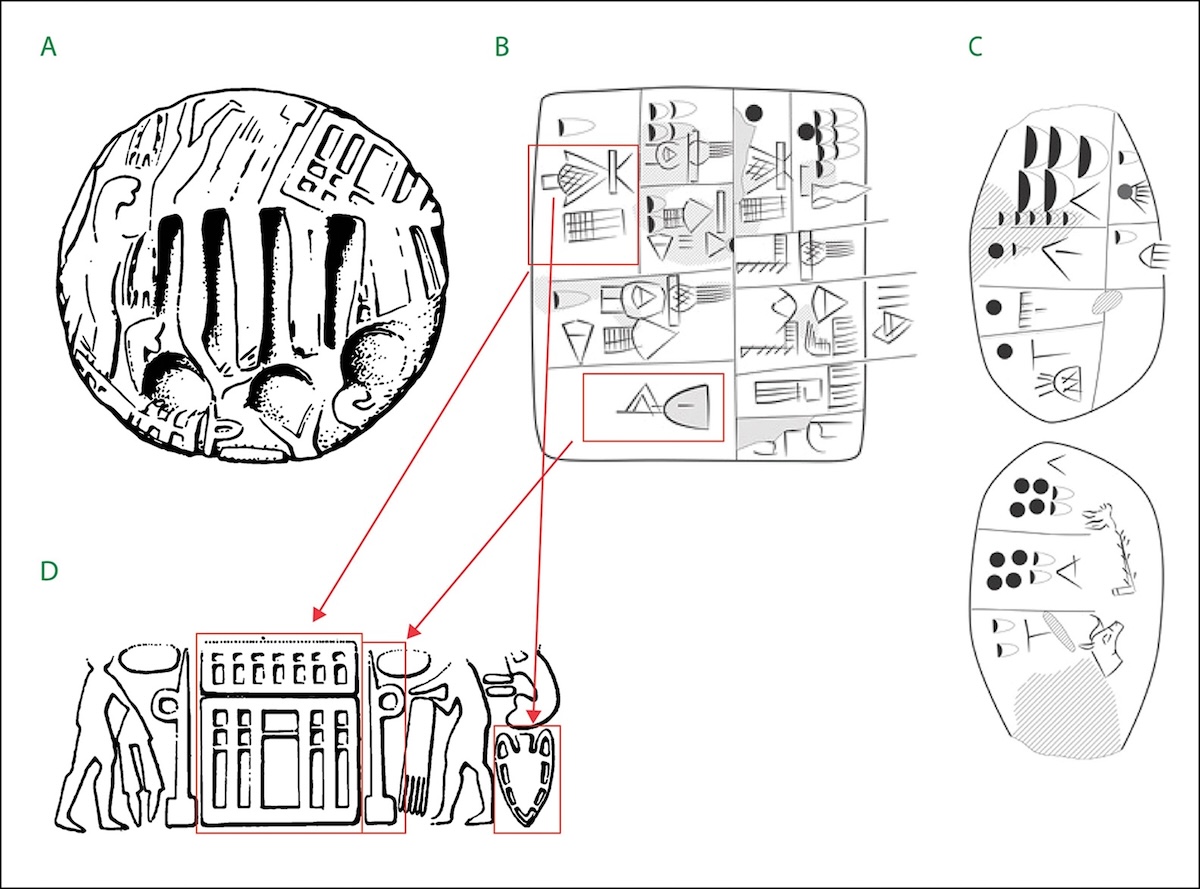
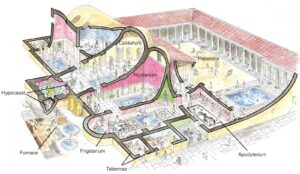
Jewish Experiences in the Roman Bathhouses of Judaea/Syria Palaestina


Post a comment